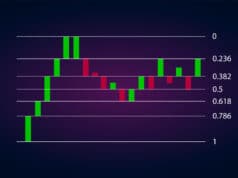Understanding bond markets and their impact on currency values isn’t hard, even if you aren’t a specialist in bonds. Bond traders have an easy time going from trading bonds to trading currency pairs because of how closely the two types of assets are linked.
The reason for this is that bond rates often fluctuate in lockstep with the value of foreign currency pairs. And the same factors that drive currencies also have an impact on bonds. In other words, economic events have an impact on bonds, and bonds have an impact on currencies.
Debt obligations issued by the government almost always represent all of a country’s debt, which is typically in the form of bonds. Government-issued bonds are held in high regard because they are the most likely to be paid off and are just as liquid as actual currency. One reason for the increased popularity of corporate bonds is that they may be used to fund huge business deals, which is more convenient than paying in cash.
Investors can also opt to head to the bond market, where they are free to trade their bonds. This mechanism explains why the bond market is also known as the debt market because, essentially, people buy and sell government debt. Through this arrangement, both governments and corporations can get large funding for their long-term projects.
Bond prices and yields
A bond is a promise by the issuer to pay the buyer of the bond a sum of money with additional interest. However, unlike a loan, it has the advantage of being transferable.
Bond pricing considers not just the interest rate that will be paid but also the probability that the bond issuer will repay the bond. High risk must be accompanied by a high-interest rate for a bond sale to succeed, especially in junk-status or less creditworthy economies.
So, an increase in bond interest rates, or bond yields, is associated with a greater degree of economic risk.
It is believed that the US government will be the first to honor their debt obligations and is hence considered one of the most creditworthy economies. Because of this, their bond rates are low.
A country with a bleaker economic outlook will, on the other hand, be billed a higher interest rate on its government bonds. Carry trade is a big player in the currency market, and interest rate differentials are what get it going.
Bond yields are influenced by the central bank’s benchmark interest rate. Investors have to weigh between bonds and bank interest rates payments and decide on which option to go for, depending on what they stand to gain and the risk taken.
Bonds carry a higher risk than savings accounts because, unlike bonds, you can get your money out of your savings account whenever you need it, but with a bond, you’re locked in for a fixed time, meaning you can’t access your money for that long.
Aside from that, they offer larger interest rates than bank deposits do. Bond yields rise when the reference rate is raised, while bond yields fall when the reference rate is lowered.
Bond yields and currency price action
Bond yield is influenced by investor sentiment. It makes sense, in this regard, that when considering the risk of a bond defaulting, investors decide how much they think they will receive in relation to the risk.
Once they bring in their foreign capital, it, therefore, causes exchange rates to shift, thanks to the money being exchanged internationally. Bond traders and bond investors alike can get help from both currency and bond markets because the information is moving back and forth between the two.
When investors grow more cautious, they may significantly increase their purchases of government bonds. This exerts pressure on interest rates, which in turn raises inflation in the affected countries. The US dollar rises in value in this situation, and this then results in other currencies becoming substantially weaker.
The trade-off between the bond and currency values provides an illustration of how, when significant economic data is announced, the value of a currency links to its government bond prices. For instance, the US 10-year treasury note and the US dollar move together when key data comes out.
In addition, high-yield bonds may attract overseas investors who will sell their native currencies in order to buy the USD to buy the bonds. This leads to a stronger US dollar compared to those currencies.
To avoid paying more interest on their debt, governments hold off raising interest rates as they worry about the impact it would have on their debt repayment costs. Furthermore, as interest rates rise, bonds become more attractive as compared to other, riskier investments such as stocks or the purchase of tangible assets. This inhibits business activity, and consequently, the economy slows down.
Which one would you prefer?
When comparing these two markets, it is obvious that they are very distinct alternatives. The bond market is a more gradual and consistent method of investment that is tied to a specific period of time and location. The forex market is unusual since it is fast, allows instant trading, and offers a high level of liquidity.
Bottom line
Bond rates fluctuate as investors weigh their desires for greater returns on their investments against potential default. Bond yields and Forex tend to be connected; thus, bond yields can be a good indicator of currency movements.




